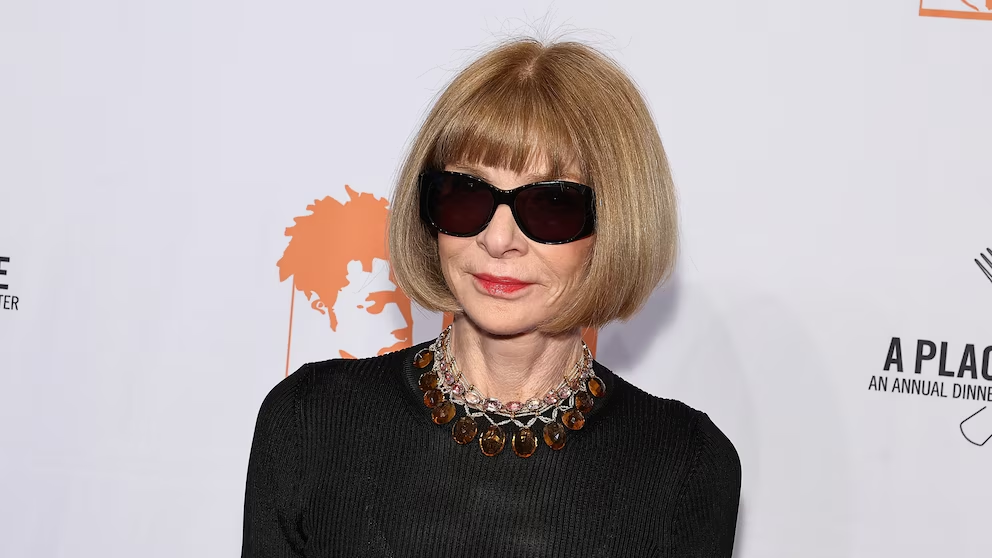
Anna Wintour: The Iron Lady of Fashion Who Changed the Industry Forever
Introduction
When you think of power, influence, and style in the fashion world, one name instantly commands attention — Anna Wintour. As the editor-in-chief of Vogue since 1988 and Global Chief Content Officer at Condé Nast, Wintour has shaped not just fashion journalism, but the global fashion industry itself. Her signature bob haircut, ever-present sunglasses, and no-nonsense demeanor have made her a cultural icon. But behind the mystique lies a visionary who forever changed the way we view fashion.
Early Life and Background
Anna Wintour was born on November 3, 1949, in London, England, into a family immersed in journalism. Her father, Charles Wintour, was the editor of the Evening Standard, and his influence on her career path was profound. Though she left North London Collegiate School early and never pursued a college degree, Wintour’s intuition and boldness would soon set her apart in the competitive world of fashion journalism.
Her early stints included working at Harper’s & Queen in London, followed by roles at Harper’s Bazaar and New York Magazine in the U.S. Even then, Anna was known for her strong opinions, cutting-edge fashion sensibility, and ability to forecast trends before they became mainstream.
Vogue and the Wintour Era
Anna Wintour took the helm of Vogue in 1988, marking the beginning of what would become a revolutionary editorial shift. Her very first cover — a model in jeans and a couture top — broke the mold of traditional high-fashion visuals. It was a statement: fashion was changing, and so was Vogue.
Under her leadership, Vogue became more than a fashion magazine. It became a cultural authority. Wintour broadened its scope to include coverage of politics, technology, and celebrity culture, all while maintaining a core dedication to style.
She championed the celebrity cover trend, replacing supermodels with A-list stars like Nicole Kidman, Beyoncé, and Kim Kardashian. It was a controversial move at the time, but one that helped Vogue remain relevant in the digital age.
A Force Behind the Scenes
Wintour’s influence extends far beyond the pages of a magazine. She’s credited with launching the careers of many top designers, including John Galliano, Alexander McQueen, and Marc Jacobs, by providing them visibility and support during their early days.
As the chair of the Met Gala since 1995, Anna has transformed the annual fundraiser into the fashion event of the year. The Met Gala isn’t just a red carpet — it’s a global spectacle, blending art, fashion, celebrity, and philanthropy.
She’s also an advocate for fashion sustainability and diversity, increasingly pushing Vogue and Condé Nast to showcase a broader spectrum of models, cultures, and voices.
Leadership Style and Legacy
Often described as demanding, disciplined, and even intimidating, Wintour’s leadership style has earned her both criticism and admiration. The 2006 film The Devil Wears Prada, rumored to be inspired by her, painted a picture of a perfectionist boss with icy standards. Yet insiders often argue that Wintour’s high expectations are exactly what’s made her and Vogue successful.
She’s known for making decisions quickly, trusting her instincts, and being fiercely loyal to her team and vision. In an industry prone to fast change, she’s remained a constant, which is no small feat.
Controversies and Criticism
With great power comes great scrutiny. Wintour has been criticized for a lack of inclusivity in earlier years, for perpetuating unhealthy beauty standards, and for being resistant to change. However, in recent years, she has acknowledged these criticisms and expressed a commitment to diversity and progress.
In 2020, amid the rise of the Black Lives Matter movement, Wintour publicly admitted that Vogue had not done enough to elevate Black voices and pledged to improve representation across platforms.
A Woman of Vision in a Digital Age
As media transitions more deeply into the digital age, Wintour has adapted. She led Vogue’s push into digital content, YouTube, and social media, ensuring the brand stayed relevant for younger audiences. The popular “73 Questions” series, behind-the-scenes videos, and fashion week coverage online have all helped Vogue expand its global influence.
Wintour also led the initiative to create the CFDA/Vogue Fashion Fund, which offers financial support and mentorship to emerging American designers — a testament to her investment in the industry’s future.
Conclusion
Anna Wintour is not just a fashion editor — she is an institution. Through vision, resilience, and bold decision-making, she redefined what fashion media could be. Her impact is everywhere: in the designers she supported, the magazine covers she curated, and the changes she spurred in an industry that often resists them.
In a world that is constantly evolving, Anna Wintour remains a powerful constant, proving that style is not just about what you wear — it’s about how you lead, think, and shape the world around you.



